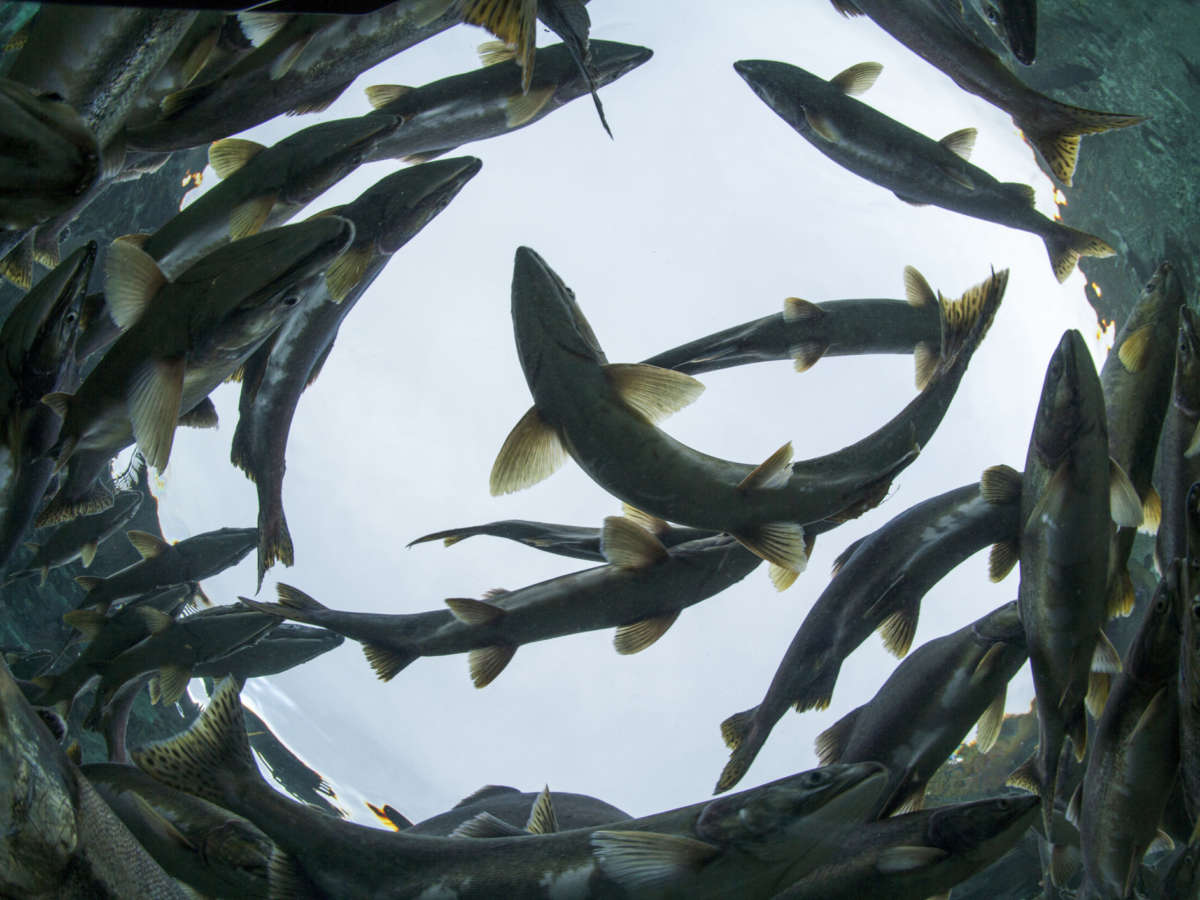When fish numbers are low, who gets to continue to harvest fish in rural Alaska? Federal agencies say only local, rural residents. The state of Alaska says all Alaskans.
The Biden administration filed suit on May 17 against the Alaska Department of Fish and Game over fish openings on the Kuskokwim River during fish shortages.
The lawsuit is part of a long-standing conflict between federal land management agencies and the state over subsistence, or the gathering of food from nature for nutrition and cultural practices.
This latest tussle was prompted by the state ignoring federal authority on the Kuskokwim river, which passes through the Yukon Delta National Wildlife Refuge. The state has been holding fish openings for all Alaskans on the same days the federal government had limited openings to local rural residents due to low fish numbers.
Communications director for the U.S. Department of Interior Melissa Schwarts said in a prepared statement, “this week, the Alaska Department of Fish and Game announced harvest openings in violation of federal law and which would interfere with the priority for rural subsistence use provided by Title VIII of ANILCA (the Alaska National Interest Lands Conservation Act).”
She said the “predicted low number of returning Chinook and chum salmon require restrictions on the taking of salmon within the Refuge with limited openings to federally qualified rural residents.”
In its court filings, the Department of Justice said the state had warned federal agencies of its intent to disregard both federal scientists’ estimations of when fish closures are needed and the federal agencies’ authority to set harvest limits. The filings said current Alaska Fish and Game Commissioner Doug Vincent-Lang, in 2014 expressed “the state’s future intent to disregard federal closures and provide harvest openings for all Alaskans…”
For its part, the state says it’s living up to its responsibility to uphold the state Constitution, which prohibits exclusive or special privileges to take fish and wildlife, and reserves them for common use.
Temporary Media Liaison and Assistant Attorney General Grace Lee said, “Although we are still reviewing the complaint, the state stands by its management decisions. These decisions are based on a foundation of sound science guided by a management plan and metrics vetted through the Alaska Board of Fisheries with input from the local stakeholder working group. This ensures that there are adequate subsistence opportunities for Alaskans while adhering to the sustainability principle enshrined in the Alaska Constitution,” she said.
“It is unfortunate that the federal government is choosing to litigate instead of working together with the State to meet the subsistence needs of all Alaskans who have not only a nutritional dependency on these fisheries but have close cultural and traditional ties as well,” Lee said.
This conflict has been underway since at least 1989 when a court ruling said ANILCA and the state Constitution contradict one another. Congress and state legislators have since failed to amend either ANILCA or the state Constitution to resolve the clash.
The Setting
The Kuskokwim River delta features millions of migratory ducks, geese and other waterfowl as well as five species of salmon, brown and black bears, caribou, and moose. The refuge is home to a dozen villages of predominantly Yup’ik, Cupik, and Deg Xit’an Athabascan people.
Subsistence is vitally important to those villages, as it is to the economy of all of rural Alaska. Store bought food is expensive due to the high transportation costs of bringing it in by barge or plane.
For instance, in Akiak, a village of 400 on the Kuskokwim River, a dozen eggs cost $6.65 at the Kokarmiut general store. Hamburger is $7.30 a pound. Those kinds of prices are one reason why local harvests of fish and game are measured in the hundreds of pounds.
Subsistence is also deeply ingrained in Indigenous cultures. John Active, a Yup’ik elder who has since passed on, told Cultural Survival in 1998, “Our subsistence lifestyle is our culture. Without subsistence we will not survive as a people. If our culture, our subsistence lifestyle should disappear, we will be no more.”
Refuge managers have been working closely with the Kuskokwim River Intertribal Fish Commission, which represents 33 tribes. In its court filings, the Interior department said it has also reached out to the state to coordinate fisheries management in the refuge.
Kevin Woodworth, interim executive director of the commission, said fish populations on the Kuskokwim have plummeted to levels ranging from poor to disastrous.
“For the past decade or so, king salmon runs have been very low. Here on the Kuskokwim, the past two years, chum salmon runs have been record low numbers – just a disaster. And there hasn’t been enough king salmon for several years for people’s needs…this year it’s not looking good for either species to be able to provide for local people’s needs.”
Board chair for the commission Mike Williams, Yup’ik, who is also chief of the Akiak Tribal Council, said with gasoline for boats and snow machines in the $5 to $6 a gallon range, villagers want to harvest food as efficiently as possible but are having to turn to species that are harder to harvest in quantity.
”So we are catching more white fish and also are catching more shee fish and putting them to supplement that and with pike and with other species. Also we’re hunting more beaver and also making sure that you know, we have our moose. Our caribou (hunting seasons) have been closed as well over here, but we’ve been supplementing our salmon with other species. So it’s been a struggle and we’ve come short every winter,” Williams said.
“We have to rely more on store bought foods. We have relatives in the Yukon (region) that we wanted to send (food to), but we’re just getting by with what we have on the Kuskokwim river,” he said.
The Kuskokwim Inter-tribal Fish Commission is considering its options to enter the suit on the side of the federal government.


